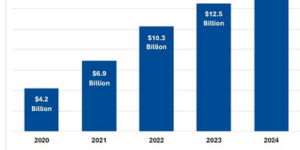Axa SA gave under-fire Chief Executive Officer Thomas Buberl a needed boost with first-half earnings that beat estimates and growth in new business.
Axa, posting its first results since a disappointing partial spinoff of the French insurer’s U.S. unit, reported strong profitability across the firm and said first-half underlying earnings per share rose 6 percent to 1.33 euros, exceeding estimates. New business volumes grew strongly in health and protection.
“We view this as a strong set of results,” Goldman Sachs Group Inc. analysts led by Johnny Vo wrote in a note. Axa has made clear that its number one priority is reducing leverage and restoring financial flexibility, they wrote.
Axa rose as much as 2.4 percent in Paris trading, the most in two months. The stock was up 1.3 percent at 21.97 euros as of 9:22 a.m. in Paris.
The CEO has been under scrutiny since he surprised investors by announcing a $15.3 billion takeover of XL Group in March, part of a plan to shift Axa toward property and casualty insurance. That pressure intensified when Axa, Europe’s second-largest insurer, raised almost $1 billion less than it had hoped from the initial public offering of its U.S. unit. The firm said on Wednesday that it’s in talks to sell a retirement products business in Dublin and expects 1.17 billion euros in cash from the deal.
“Our simplified operating model is bearing fruit,” Buberl said in a statement on Thursday. “We have a strong growth dynamic across our geographies.”
Click here to read more about the sale by Axa of a retirement products unit
The acquisition of XL, Axa’s biggest ever, is expected to be completed in the second half. The transaction will make Axa the top provider of commercial casualty coverage just as premiums rise after last year’s hurricanes and California wildfires. The deal will also allow the insurer to focus on parts of the industry that are less sensitive to financial markets, a key target for insurers after investment income was hurt by a decade of low interest rates.
“Investors are uncertain about the strategic direction that he’s taking the company in, and the thinking behind it,” Bloomberg Intelligence analyst Charles Graham said before the earnings report.
Costs rose at Axa’s property and casualty unit in the first half when compared with premiums. The combined ratio for P&C has risen 0.5 percentage points to 97.1 percent, mainly due to weather related events in Europe.
“It’s going to be some time before we see the scale of the contribution that XL will make to the business,” Graham said.
XL this week reported net income of $319 million for the second quarter, up from $301.6 million a year earlier. Property and casualty gross premiums written rose 10.6 percent.
Axa’s Solvency II ratio — a measure of its ability to absorb losses — rose to 233 percent, from 205 percent at the end of last year. A ratio of 100 means a firm has sufficient capital to withstand the kind of shock that happens once in 200 years.
Other highlights from the earnings:
Net income fell 11 percent to 2.8 billion euros because of costs linked in part to the U.S. unit IPO Adjusted return on equity rose to 15.6 percent from 14.7 percent Adjusted earnings rose 9 percent to 3.6 billion euros on a constant F/X basis AllianceBernstein had outflows of 8 billion euros, mainly at lower margin retirement products. Asset management revenues at the unit were up 11%





















 No Escape From Tariffs — Not Even for D&O Liability Insurers
No Escape From Tariffs — Not Even for D&O Liability Insurers  1 in 6 Americans Report Feeling Stressed Every Day
1 in 6 Americans Report Feeling Stressed Every Day  Roof Repair and Replacement Costs Up Nearly 30% Since 2022: Verisk
Roof Repair and Replacement Costs Up Nearly 30% Since 2022: Verisk  Bill Aims to Make Staged Accidents a Federal Crime
Bill Aims to Make Staged Accidents a Federal Crime 



